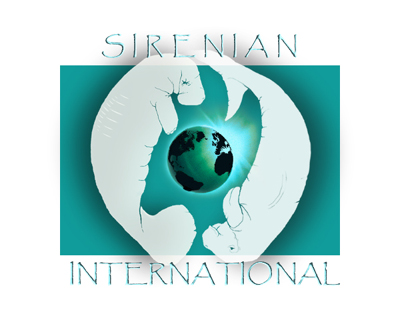Leszek Karczmarski, Ph.D., Head: Cetacean Unit, Mammal Research Institute, University of Pretoria, South Africa;
Associate Research Faculty, Texas A&M University at Galveston, USA; Swire Institute of Marine Science, University of Hong Kong, Hong Kong.
Our Patrons and Contributors
 BIG SLOPPY MERMAID KISSES and our most sincere thanks and appreciation go to the following Patrons and Contributors who have made
donations of funds and/or services exceeding $100 in any one year: Thinkhost.com, Dolphin Wild Eco-Adventures, Bill & Pat Braker, Brett Irwin, Brian Casey,
Brooke Michaels, Cheryl Lechtanski, Clifton Jones, David Pouliot, Doug Perrine, Dr. & Mrs. William Evans, Dr. Jane M. Packard, Edmund Gerstein, Francis Burtt, Hayley VanderStel,
Heather Van Wagner, Holly Twining, HostMySite.com, Howard & Michele Hall, Hunton & Williams, Jack Burtt, John Patrick Sullivan, Karen Downen, Kathryn Karn,
Kieran J. Carew, Linda Hurt, Maija Gadient-Heberlein, Mary Turlington, Michael Bragg, Mike Winkler, Mr. & Mrs. James H. Self, Nancy Smith, Patricia Witt, Paul Camp,
Renee Bicker, Sandra Rosenberg, Scott Carle, Sue Otto, Susan & Rodney Wagner, Martin Packard Family, Thomas W. Evans, Tim Hayes, ...YOUR NAME HERE!
BIG SLOPPY MERMAID KISSES and our most sincere thanks and appreciation go to the following Patrons and Contributors who have made
donations of funds and/or services exceeding $100 in any one year: Thinkhost.com, Dolphin Wild Eco-Adventures, Bill & Pat Braker, Brett Irwin, Brian Casey,
Brooke Michaels, Cheryl Lechtanski, Clifton Jones, David Pouliot, Doug Perrine, Dr. & Mrs. William Evans, Dr. Jane M. Packard, Edmund Gerstein, Francis Burtt, Hayley VanderStel,
Heather Van Wagner, Holly Twining, HostMySite.com, Howard & Michele Hall, Hunton & Williams, Jack Burtt, John Patrick Sullivan, Karen Downen, Kathryn Karn,
Kieran J. Carew, Linda Hurt, Maija Gadient-Heberlein, Mary Turlington, Michael Bragg, Mike Winkler, Mr. & Mrs. James H. Self, Nancy Smith, Patricia Witt, Paul Camp,
Renee Bicker, Sandra Rosenberg, Scott Carle, Sue Otto, Susan & Rodney Wagner, Martin Packard Family, Thomas W. Evans, Tim Hayes, ...YOUR NAME HERE!
Add your name to this list in
perpetuity. JOIN our Membership at the Patron or Contributing
Level.

 (c) 2000-2007 Sirenian International, Inc.
SNAIL MAIL TO: Sirenian International, Inc., 200 Stonewall Drive, Fredericksburg, VA 22401-2110 USA
Sirenian International, Inc. is a non-profit, tax-exempt 501(c)(3) corporation.
(c) 2000-2007 Sirenian International, Inc.
SNAIL MAIL TO: Sirenian International, Inc., 200 Stonewall Drive, Fredericksburg, VA 22401-2110 USA
Sirenian International, Inc. is a non-profit, tax-exempt 501(c)(3) corporation.
All contributions are tax deductible within the limits of the law.
Sirenian International Logo by John Patrick Sullivan |
Website hosted by Sirenian International | Webmaster


